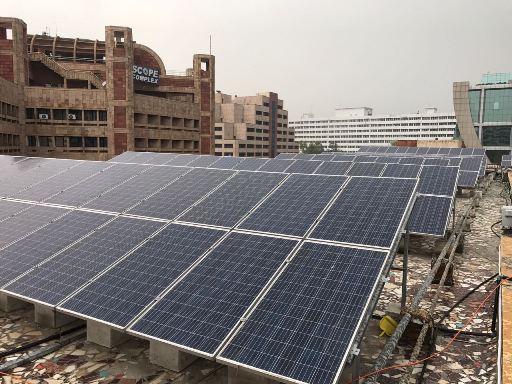ICRA expects the demand prospects for RE capacity addition by commercial & industrial (C&I) segment to remain solid, given the improved tariff competitiveness and strong sustainability/green initiatives by C&I players to meet their energy requirements through renewables, going forward.
C&I segment itself accounts for about 40-45 per cent share in all India energy demand. Even assuming 20 per cent of the energy requirements to be met by C&I segment through RE, RE capacity addition requirement is estimated to remain significant at about 75 GW by 2030. Further, the policy focus by Government of India (GoI) in RE remains strong, with a net zero energy transition target by 2070.
As per the recent report published by ICRA on Renewable Energy sector, Girishkumar Kadam, Senior Vice President & Co-Group Head – Corporate ratings, ICRA, said, “From the C&I off-taker’s perspective, cost of sourcing of RE through open access remains at discount to grid tariffs after factoring the applicable open access charges. The grid tariffs have shown a rise and the energy charge in the same also varies widely between Rs.6-7 per kwh and Rs.6-10 per kwh for HT industrial and commercial segment respectively, across the states. Nonetheless, the regulatory risk remains a challenge for open access based RE projects, due to dependency on open access and banking requirements. The open access & banking charges/norms also vary widely with effective cost ranging between Rs.1.5 to 5 per kwh across key states, with an increasing trend seen due to upward pressure on cost of power supply & continued high level of cross-subsidization in the tariff structure for the discoms.”
The open access charges mainly comprise of cross subsidy surcharge (CSS), additional surcharge (AS), wheeling charges and banking charges as per the applicable norms by State Electricity Regulatory Commission (SERCs) across the states. CSS varies widely between Rs 0.7 to 2.2 per kwh as observed across the key states, with the removal of concessions / exemptions by SERCs – which were earlier available for RE projects in third party open access route. In addition to CSS, AS has also been in place in most states for open access based RE projects, & the same varies widely between Rs.0.25 to 1.3 per kwh across the states.
Also read: Tata Power Completes Over 150 Energy Audits Of C&I Customers
As a result, the captive or group captive projects are being preferred due to relatively lower regulatory risk (i.e. non-applicability of CSS and AS) as compared with third party sale route. Despite the regulatory challenges, third-party sale route under open access remains fairly attractive for the IPPs in some of the key states like Gujarat, Karnataka, Rajasthan and Tamil Nadu wherein the maximum discount that can be offered by the IPPs thus varies between 15 to 30 per cent assuming net tariff of Rs.3.25 per kwh.
Commenting further on the policy & regulatory developments, Mr. Vikram V, Vice President & Sector Head – Corporate Ratings, said, “Recent directive by Supreme Court in December 2021 for non-applicability of additional surcharge for captive projects however remains a positive for captive RE projects. The clarity on the extent of waiver of inter-state transmission charges (ISTS) for projects to be commissioned by FY28 also remains a positive. Moreover, draft rules on RE open access by Ministry of Power, dated August 2021 are yet to be notified and would benefit RE players, if the same is notified and implemented by SERCs given the certainty and clarity proposed in open access and banking norms.”

